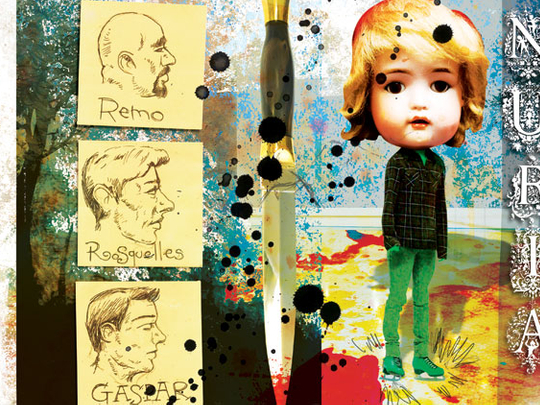
"A darkly atmospheric chronicle of one summer season in a seaside town, on the Costa Brava, north of Barcelona" is how Chilean writer Roberto Bolano's short novel The Skating Rink is penned.
The author died seven years ago at the age of 50, with the Romulo Gallegos prize for his novel The Savage Detectives (Los detectives Salvajes) as credit to his name.
In 2008, his novel 2666 posthumously won him the National Book Critics Circle award for fiction.
Since his death, many more of his works have been published, some in translation from Spanish to English: The Skating Rink is one of the latest.
The premise of this short novel is somewhat odd. The beautiful Nuria Marti has been dropped from the national ice skating team. Thus, overweight admirer Enric Rosquelles decides to build her an ice rink of her own — with embezzled public funds — on which she can practise.
Bolano's work strays from the formulaic format of the "whodunnit" genre. Indeed, the sometimes-diary-style account by the three narrators provides excellent character visualisation.
The Chilean writer manages to take the crime out of the crime novel, bringing it in only in the final chapters of his short work. This leads the reader along the different paths of the narrators' experiences, a technique much-used by the prolific crime novelist Agatha Christie.
The plot follows Rosquelles, poet and night watchman Gaspar Heredia and Remo Moran, a poet-turned-novelist who owns a tourist business on the coast. The trio is described as "a corrupt and pompous civil servant, a beleaguered yet romantic itinerant poet and a duplicitous local entrepreneur".
The three main places in the novel have only been termed "X", "Y" and "Z" by Bolano, maybe to show that giving names to fictional places that don't necessarily affect the plotline is unnecessary. Are readers bothered by the fact that the seaside towns don't have real names? Unlikely. What is more important are the narrators' interactions with their fellow characters, fellow narrators and the ice skater.
The "blonde angel" is having an affair with Remo Moran, the "South American dealer", much to Rosquelles's disdain, particularly when he discovers them together at a bar, both sitting there with wet hair.
"The situation was awkward, to say the least: Rosquelles greeted me with a mixture of hatred and wariness; Nuria greeted Rosquelles with a show of impatience and, I suspect, a touch of pleasure; caught off-guard, I was slow to realise that Mister Lard-Ass wasn't after me but had come to rescue his blonde angel."
Moran continues with his diary-like style: "When I tried to weigh in on the conversation, Rosquelles, who had been so bubbly just a few moments before, had already slumped into a kind of torpor: He was gripping the bar with both hands, his eyes fixed on the floor, pale and shaken, as if he'd been kicked by a donkey. It was a perfect opportunity to crush him, but I chose to observe … he seemed to be on the brink of tears when they left."
Who is killed in the end? It seems it doesn't really matter, as this book is about the men, the woman and Bolano.
Antwerp, Monsieur Pain and The Insufferable Gaucho are among this year's translations while publisher New Directions has scheduled other works to be released next year, which include Between Parentheses and The Secret of Evil.
The Skating Rink by Roberto Bolano,Translated by Chris Andrews, New Directions, 192 pages, $14.95








